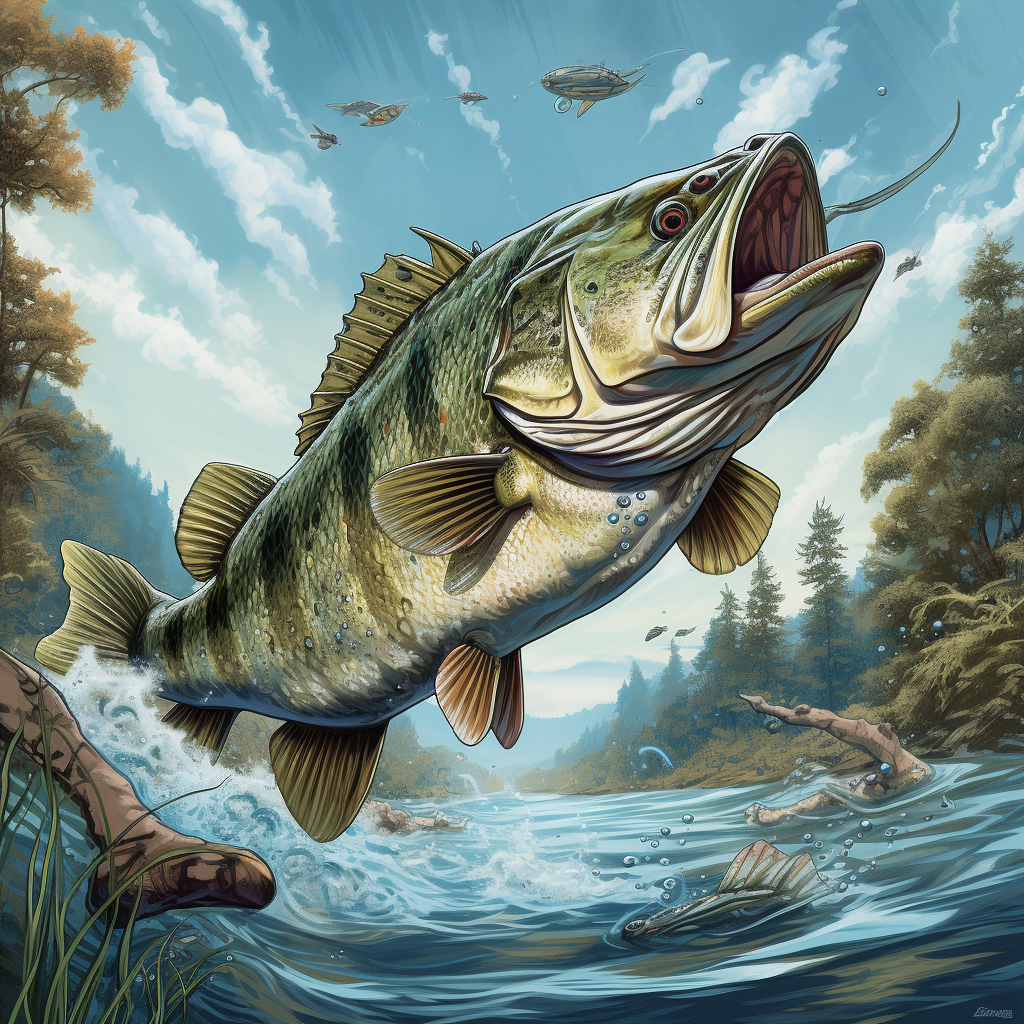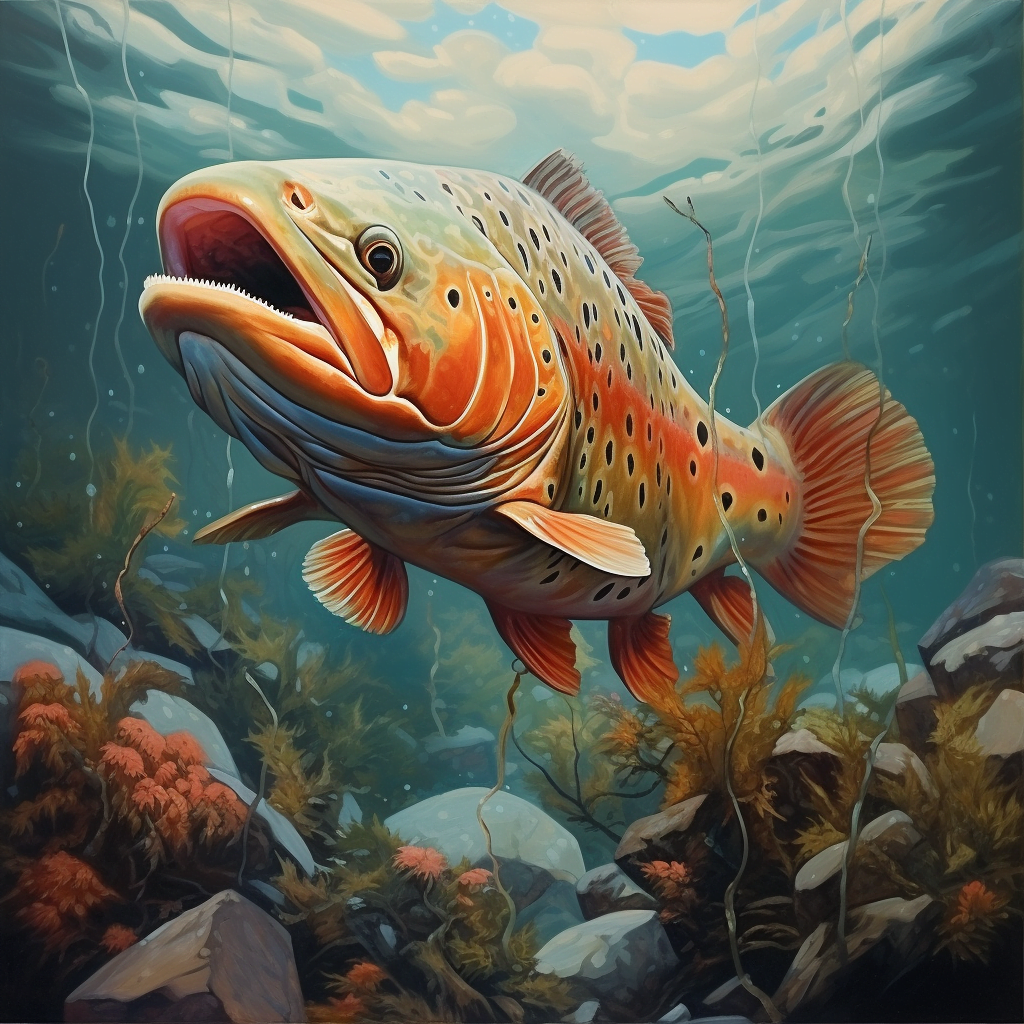So, have you ever wondered which fish puts up a better fight: bass or trout? It’s a common debate among anglers, and today we’re going to dive into the battle of the species. Both bass and trout are highly prized catches in the fishing world, but they have their own unique characteristics and fighting styles that make them distinct. You’re in for an interesting ride as we explore the differences, so let’s jump right in!
When it comes to sheer strength and power, bass are often considered the heavyweight champions. These fierce predators are known for their explosive strikes and strong bursts of energy, making them a thrill to reel in. On the other hand, trout are nimble and agile, employing quick and acrobatic movements to escape from the hook. They may not have the same brute force as bass, but their cunning tactics make them a formidable adversary in their own right.
In this article, we’ll delve deeper into the various factors that affect the fight between bass and trout. We’ll explore their habitat preferences, feeding behaviors, and even the type of fishing gear you should use when targeting each species. By the end, you’ll have a better understanding of which fish truly reigns supreme in the battle for the title of the most challenging opponent. So, stay tuned for some exciting insights and expert tips that will elevate your fishing game.

Battle of the Species: Bass vs Trout
When it comes to the battle of the species, there’s no shortage of contenders in the world of fishing. Among the most sought-after species are bass and trout. These two fish may appear similar at first glance, but they possess distinctive physical characteristics and inhabit different habitats. Additionally, they have unique feeding habits and exhibit varying fighting abilities. Both bass and trout hold immense recreational fishing importance, attracting anglers from all walks of life. In this article, we will explore these aspects and delve into the age-old question: Do bass fight harder than trout?
Physical Characteristics of Bass
Bass, known for their muscular build and powerful jaws, possess a distinct set of physical characteristics that make them formidable opponents. They come in various species, such as largemouth bass, smallmouth bass, and striped bass. Largemouth bass, for instance, are recognized for their large mouths and striking emerald green coloration. With a stout body and a dorsal fin that extends almost along its entire back, largemouth bass are capable of quick and agile movements in the water.
Smallmouth bass, on the other hand, exhibit a bronze or brown coloration with vertical dark stripes along their sides. They have a slightly smaller mouth compared to their largemouth counterparts but compensate with remarkable strength and endurance.
| Aspect | Bass | Trout |
|---|---|---|
| Physical Features | Muscular, powerful jaws, various species with unique colors | Streamlined, smaller scales, vibrant or subtle colors |
| Habitat | Lakes, ponds, rivers, prefers areas with plenty of cover | Cold, clear, well-oxygenated streams, lakes, and rivers |
| Feeding Habits | Voracious, opportunistic predators | Primarily visual feeders, variety in diet |
| Fighting Abilities | Powerful, explosive, acrobatic | Speedy, agile, and can perform spectacular jumps |
| Recreational Importance | Widely recognized, bass tournaments | Scenic locations, often associated with tranquility |
Physical Characteristics of Trout
Trout, including rainbow trout, brown trout, and brook trout, possess their own set of physical characteristics that make them unique. Rainbow trout are instantly recognizable by their vibrant coloration, displaying a beautiful mix of silver, green, and pink hues along their sides. They have a streamlined body shape with small scales, enabling them to navigate swiftly through the water.
Brown trout are known for their brown or olive coloration, often adorned with black and red spots. They have a slightly stockier build compared to rainbow trout, which allows them to thrive in a wider range of habitats, including both rivers and lakes. Brook trout, the smallest of the three, showcase a distinctive pattern of worm-like markings known as vermiculations, along with vibrant orange and red spots on their sides.
Habitat and Distribution of Bass
Bass are predominantly freshwater fish, found in various regions around the world. Largemouth bass, for example, are native to North America and can be found in lakes, ponds, rivers, and reservoirs. They prefer areas with plenty of cover, such as submerged vegetation, fallen trees, and rocky structures, where they can ambush their prey. Smallmouth bass, on the other hand, tend to inhabit clear, cool waters in lakes and rivers, especially those with rocky or gravel bottoms.
Habitat and Distribution of Trout
Trout, renowned for their affinity for cold, freshwater habitats, are naturally found in the Northern Hemisphere. Rainbow trout, originally native to North America, have been introduced to various regions worldwide due to their popularity as a game fish. They prefer clear, well-oxygenated streams and rivers, but can also thrive in lakes and ponds. Brown trout, originating from Europe, have been successfully introduced into water bodies across the globe. They tend to inhabit sheltered areas with abundant cover, such as deep pools and undercut banks. Brook trout, native to North America, are typically associated with cold, clean mountain streams and small rivers.
Feeding Habits of Bass
Bass are voracious predators, known for their aggressive feeding habits. They primarily rely on their keen sense of sight and the element of surprise to hunt down prey. Largemouth bass, being opportunistic feeders, consume a wide variety of aquatic animals, including fish, frogs, crayfish, and insects. They are capable of launching speedy and accurate strikes against their unsuspecting victims. Smallmouth bass, with their exceptional vision, prefer feeding on small fish, crayfish, and insects near rocky structures or submerged vegetation. They employ a similar ambush strategy to catch their prey.
Feeding Habits of Trout
Trout, while also displaying predatory tendencies, exhibit slightly different feeding habits compared to bass. They are primarily visual feeders, relying heavily on their excellent eyesight to locate and capture food. Rainbow trout, being opportunistic feeders, consume a diverse range of prey, including insects, crustaceans, small fish, and even mice. They often patrol the water’s surface to snatch insects in mid-air or glide along the bottom to search for potential sources of food. Brown trout, known for their selective feeding behavior, are more wary and tend to focus on specific food sources, such as aquatic insects and small fish. Brook trout, being opportunistic and aggressive feeders, prey on various aquatic invertebrates, baitfish, and even small rodents.
Fighting Abilities of Bass
When it comes to the battle between bass and trout, fighting abilities play a crucial role. Bass, with their muscular bodies and powerful jaws, put up a commendable fight. Largemouth bass, in particular, exhibit strong and explosive bursts of energy upon being hooked. They employ acrobatic maneuvers, such as jumping out of the water and diving deep, in an attempt to free themselves from the angler’s line. Smallmouth bass, renowned for their spirited fights, combine their strength with a relentless endurance, often testing an angler’s skills and patience.
Fighting Abilities of Trout
Trout, although relatively smaller in size compared to bass, are no less impressive when it comes to fighting abilities. Rainbow trout, in particular, are known for their spectacular aerial displays, leaping out of the water in an attempt to shake off the hook. They possess incredible speed and agility, making them formidable adversaries. Brown trout, distinguished by their cunning nature, often rely on their size and positioning to challenge anglers. They use their strength to dive deep into cover and create a challenging fight. Brook trout, despite their smaller size, put up a surprisingly strong fight, darting quickly through the water and exhibiting remarkable agility.
Recreational Fishing Importance of Bass
Bass fishing holds significant recreational value across the globe. Anglers are drawn to the thrill and challenge of pursuing bass, whether it be largemouth or smallmouth bass. Bass tournaments, both professional and amateur, attract countless participants, showcasing the popularity and economic impact of bass fishing. Their abundance in various water bodies makes them an accessible and sought-after species, contributing to the growth of the fishing industry and creating unforgettable memories for anglers of all skill levels.
Recreational Fishing Importance of Trout
Trout fishing holds a special place in the hearts of anglers worldwide. The allure of pristine trout streams, the tranquility of mountain lakes, and the thrill of hooking a beautiful trout make it a captivating sport. Trout fishing provides a sense of serenity and connection with nature, attracting both seasoned anglers and beginners alike. The pursuit of trout is not only an enjoyable pastime but also an opportunity for conservation efforts, as many regions actively manage and protect trout populations to ensure their long-term sustainability.
Conclusion
In the battle of the species, both bass and trout showcase their unique physical characteristics, inhabit specific habitats, possess distinctive feeding habits, and exhibit varying fighting abilities. While bass may be known for their powerful jaws and aggressive nature, trout impress with their speed, agility, and spectacular displays. Whether you prefer the thrill of pursuing bass in freshwater lakes or the serene beauty of trout fishing in mountain streams, both species offer endless opportunities for anglers to experience the joy and challenge of the sport. So, the next time you head out to the water, remember that the battle between bass and trout isn’t about who fights harder but about the joy of the battle itself. Happy fishing!





